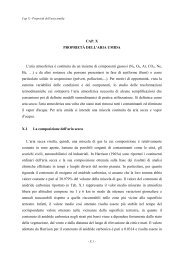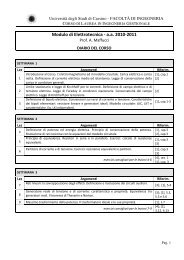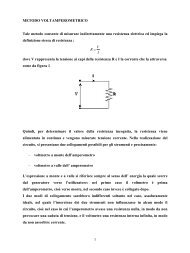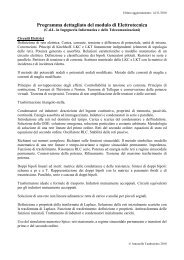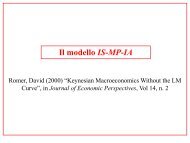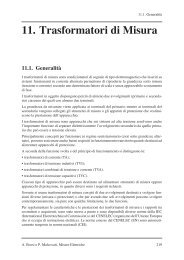Agilent Vector Signal Analysis Basics - Agilent Technologies
Agilent Vector Signal Analysis Basics - Agilent Technologies
Agilent Vector Signal Analysis Basics - Agilent Technologies
You also want an ePaper? Increase the reach of your titles
YUMPU automatically turns print PDFs into web optimized ePapers that Google loves.
A traditional swept-spectrum analyzer 1 , in effect, sweeps a narrowband<br />
filter across a range of frequencies, sequentially measuring one frequency at<br />
a time. Unfortunately, sweeping the input works well for stable or repetitive<br />
signals, but will not accurately represent signals that change during the<br />
sweep. Also, this technique only provides scalar (magnitude only) information,<br />
though some other signal characteristics can be derived by further analysis<br />
of spectrum measurements.<br />
The VSA measurement process simulates a parallel bank of filters and<br />
overcomes swept limitations by taking a “snapshot,” or time-record, of the<br />
signal; then processing all frequencies simultaneously. For example, if the<br />
input is a transient signal, the entire signal event is captured (meaning all<br />
aspects of the signal at that moment in time are digitized and captured);<br />
then used by the FFT to compute the “instantaneous” complex spectra<br />
versus frequency. This process can be performed in real-time, that is, without<br />
missing any part of the input signal. For these reasons, the VSA is sometimes<br />
referred to as a “dynamic signal analyzer” or a “real-time signal analyzer”.<br />
The VSA’s ability to track a fast-changing signal isn’t unlimited, however; it<br />
depends on the VSA’s computational capability.<br />
The VSA decreases measurement time<br />
Parallel processing yields another potential advantage for high-resolution<br />
(narrow resolution bandwidth) measurements; faster measurement time.<br />
If you’ve used a swept-tuned spectrum analyzer before, you already know<br />
that narrow resolution bandwidth (RBW) measurements of small frequency<br />
spans can be very time-consuming. Swept-tuned analyzers sweep frequencies<br />
from point to point slowly enough to allow the analog resolution bandwidth<br />
filters to settle. By contrast, the VSA measures across the entire frequency<br />
span at one time. However, there is analogous VSA settling time due to the<br />
digital filters and DSP. This means the VSA sweep speed is limited by data<br />
collection and digital processing time rather than analog filters. But this<br />
time is usually negligible when compared to the settling time of analog<br />
filters. For certain narrow bandwidth measurements, the VSA can complete<br />
a measurement up to 1000 times faster than conventional swept-tuned<br />
analyzers.<br />
In a swept-tuned spectrum analyzer, the physical bandwidth of the sweeping<br />
filter limits the frequency resolution. The VSA doesn’t have this limitation.<br />
Some VSAs can resolve signals that are spaced less than 100 µHz apart.<br />
Typically, VSA resolution is limited by source and analyzer frequency<br />
stability, as well as by the amount of time you are willing to devote to the<br />
measurement. Increasing the resolution also increases the time it takes to<br />
measure the signal (the length of the required time-record).<br />
Time-capture is a great tool for signal analysis and troubleshooting<br />
Another feature that is extremely useful is the time-capture capability.<br />
This allows you to record actual signals in their entirety without gaps, and<br />
replay them later for any type of data analysis. The full set of measurement<br />
features can be applied to the captured signal. For example, you could<br />
capture a transmitted digital communications signal and then perform<br />
both spectrum and vector-modulation analysis to measure signal quality<br />
or identify signal impairments.<br />
1. For more information on spectrum analyzers, see<br />
<strong>Agilent</strong> Application Note 150, Spectrum <strong>Analysis</strong><br />
<strong>Basics</strong>, literature number 5952-0292.<br />
4





